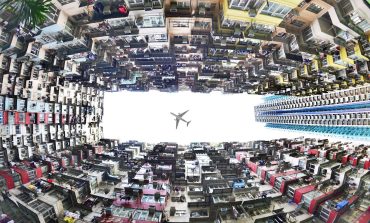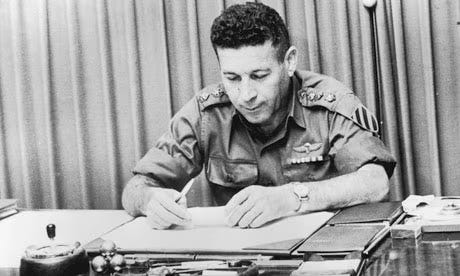In 1975, while I was on a trip to Israel for the US Senate Foreign Relations Committee, then-defense minister Shimon Peres made the mistake of asking me what I would like to see in Israel.
Prior to meeting Peres, I had visited the Israeli tank factory south of Tel Aviv and received briefings on the relative merits of different tanks Israel either had in its inventory or had been captured. Enemy tanks of the time were mainly Soviet.
I learned a lot from the briefing. The senior tank commander explained some of the problems of Soviet tanks, especially the very cramped conditions which meant (at least then) that tank drivers had to be five feet eight inches or smaller and not too chubby. He pointed out problems with the automatic loading mechanism, a feature of Soviet tanks. Its proximity to the tank crew was such, he said, that it could and did cause injuries.
The American tanks also came in for criticism, especially the M-60 Patton tank. He explained the technical problems and some measures Israel had taken to fix them. One particular invention, the gun shroud, prevented gun barrel warping, a major problem in combat. These fixes were later briefed to the Pentagon. Some of them it accepted, others not so much.
The best tank was the British Centurion because it was reliable and could withstand hits even by anti-tank weapons.
I asked him about the new tank Israel was building. He said he did not know what I was referring to. But a friend of mine in the US military had tipped me off. There was no point in pressing the colonel; but when I met with Peres and he asked me what I wanted to see, I told him point blank, “the new tank.” He didn’t blink an eye. He asked when I could see it. I said “now.” He ordered a car and sent me back to the tank factory.
At the tank factory, the senior colonel gave me a briefing on security. Next “the boss” came in. He was General Israel Tal, commonly referred to as Tallik. A little man, he was tough as nails and very smart. As I got to know him I realized two things.
First, he was a genuine student of armored warfare, a student of – of all people – Rommel and Guderian and an expert on tanks as they battled in North Africa and in Europe.
The second thing was about his politics. You would think a tank commander would be very conservative. In fact, Tal was well to the left of the then-ruling Labor Party in Israel, especially when it came to the idea of trading territory for peace.
Tal took me to “the tank” which would soon be named Merkava Mk 1. (Now Israel is producing the “Barak” or Lightning tank, Merkava Mk 5.) “The tank” was in pieces on the factory floor. So we stepped in and out of the tank’s shell, and Tal laboriously explained all its features.
The most important development grew out of the dismal experience in the Yom Kippur War (October 1973) in which Israel suffered heavy losses of tanks. All tanks proved vulnerable to anti-tank missiles and even to RPG-7 rocket grenades with shaped charge warheads.

Obviously, there were two distinct ways to deal with the evolving threat. One way, which most Western tank makers adopted, was to make better armor – not just thicker armor, but composite layered armor capable of defeating enemy weapons. The other approach was exclusively Israeli. Tal and his colleagues accepted that tanks were going to get hit and would be either destroyed or damaged, leaving the crew stranded.
Israel worked on the idea that the first priority for armor systems was crew protection and the best crew protection was to make it easy for the crew to get out of the tank. Typically, to get out of a tank you have to climb up through the hatch in the turret. That makes you vulnerable to small arms fire.
It also can accommodate only one crew member at a time, leaving the others vulnerable to a wounded tank that might be on fire. One answer to this was to put in fire suppression systems in tanks, something like the sprinkler system you see in commercial buildings, but under higher pressure and loaded with chemical fire suppressants.

The Israeli idea was to reverse the tank design. Instead of the engine in the back like almost all modern tanks, the Merkava had the engine in the front. That left the rear of the tank as an exit point, and a good-sized exit was designed that also formed a gangway.
In this design, the crew had a route for a fast exit. Moreover, the tank could be used to extract wounded and trapped infantry and others on the battlefield, so it was a kind of armored ambulance.
This was the main feature, but not the only one, designed to enhance crew protection. If you start with the proposition that all tanks, sooner or later, are going to be hit by enemy fire, then you should aim at the best solution for crew protection.
US, British and German tanks all work on the assumption that the sophisticated composite armor will protect the crew. As all have learned, that isn’t always the case. Every tank has vulnerabilities.
In Ukraine, for example, it was almost immediately clear that the composite armor (sometimes called Chobham armor after its initial UK design) was not always enough. The Ukrainians started taking Russian reactive armor from shot-up tank hulls and have installed it on Leopards.
It isn’t clear what was done with British Challenger II tanks but some of the Abrams tanks had early-version reactive armor kits that do not seem to have done much good. (Five Abrams tanks have been destroyed so far.)
The Ukrainians also started the procedure of welding a metal “bird cage” over the turret to act as a tripwire to explode tandem-charge warheads before they could penetrate the tank. (Israel has done the same thing for its Merkava tanks operating in Gaza.)
The problem with adding explosive reactive armor (ERA) is that it is heavy. When you already have a 70-ton behemoth, adding another few tons makes its roadworthiness questionable. A key problem for the Leopard and Abrams tanks has been getting stuck in the mud in Ukraine, where they then can be picked off fairly easily.
Judging from some of the videos that have been published by both the Russians and Ukrainians, getting out of a Western or Soviet-era tank is no easy task, especially if there is a fire.
The new Russian Armata T-14 tank takes a somewhat different approach, according to published information. It has built an armor cocoon around the crew so it is protected even when the tank is hit.
This makes some sense: When an anti-tank weapon penetrates a tank it sprays superheated steel fragments everywhere and fragments can kill or wound. The T-14 approach should be a big help in that regard. But what seems to be missing is a way to get out quickly.

There are not many options for escape. In some old Soviet tanks, you could get out from the tank’s floor, dropping down between the running wheels. This leaves the crew in a prone position and if the tank is disabled they have to try and crawl to safety.
The US has stopped upgrading the M-1 Abrams tank and canceled the latest modifications. It is clear that, given the new battlefield weapons, even the huge M-1 Abrams is not survivable. A new tank design is needed.
If the Pentagon thinks the proposition through, it should aim at a tank design that prioritizes tank crew safety first. That was Tal’s idea and it seems to have proven itself over the years. Today it may be possible to construct a much lighter tank with better crew security and protection.
The M1 tank dates back to the period 1972 to 1975, meaning the design is at least 50 years old.
Armor is essential to warfighting. Some automated uncrewed systems are one future approach but even truly self-driving systems face many problems that require manned armor systems to go into the fight with them. So long as that is the case, a new generation of armored vehicles is needed.
Stephen Bryen served as staff director of the Near East Subcommittee of the Senate Foreign Relations Committee and as a deputy undersecretary of defense for policy.
This article was first published on his Weapons and Strategy Substack and is republished with permission.


